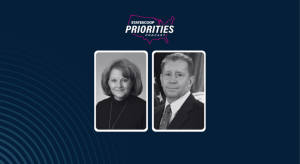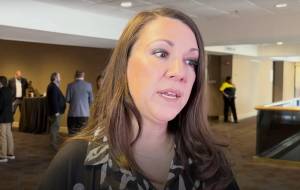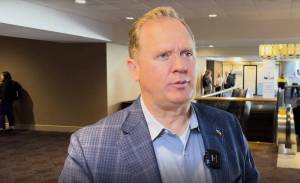Boston, New York City craft new open data policies

New York City and Boston may be bitter rivals on the baseball diamond, but they’re peas in a pod when it comes to open data initiatives.
Both released new open data policies last month, and the cities’ IT staffers have worked closely to make data accessible and useful for their citizens.
For Boston’s chief information officer, Jascha Franklin-Hodge, the process of establishing this set of standards was a relatively new one.
“In Boston, we just haven’t had a formal policy around it,” Franklin-Hodge said. “As we ran into particularly thorny issues, [we’d ask] ‘What is New York doing? What’s their approach to this?’”
Help from the Big Apple
In 2012, then-Mayor Michael Bloomberg signed a law requiring all the city’s agencies to publish all of their public data on a central portal by 2018, and staffers there have been working feverishly ever since to make that a reality.
One of the leaders of that effort has been Amen Ra Mashariki, the city’s chief analytics officer and the director of the Mayor’s Office of Data Analytics. After spending time with Franklin-Hodge at assorted conferences and panel discussions over the years, Mashariki noted that he did his best to help guide Boston’s open data efforts over the last few months.
“I think Jascha was always thinking smartly about this stuff,” Mashariki said. “He’s engaged me on several efforts, and I think a lot of it is around two things: ‘How can we get a lot of data out, what that strategy should be?’ and a lot of questions about how to ensure quality of the data.”
Franklin-Hodges noted that conversation first started in Boston when he was initially confronted with the open data dilemma last year. New Mayor Martin Walsh stepped into City Hall in January 2014, and by April, he’d put out an executive order calling for the creation of a policy governing open data in the city.
“He came to office seeking to run a more transparent city government and really think about the ways that technology in government can be a positive catalyst for innovation,” Franklin-Hodge said. “I think he recognized open data as a critical tool for achieving those goals.”
But Franklin-Hodge is quick to point out that, while the order charged him and his department with creating a policy, it provided very few details on what the policy should actually include. The CIO’s team immediately went to work drafting a series of policy documents on open data, but Franklin-Hodge admitted those “just kind of sat there” until the start of 2015 when he renewed his focus on the issue.
‘Human-readable’ policy
After consulting with New York and other cities on best practices for open data, Franklin-Hodge’s team turned toward the challenge of drafting a policy that was readable and legally rigorous. That meant putting together a document that met legal standards, but that people could understand “without having a law degree.”
Franklin-Hodge said that process required long hours with legal counsel, sorting passages into those that were “human-readable” and “lawyer-readable” before eventually reconciling both perspectives.
Once that work was complete, Franklin-Hodge and his team emerged with the city’s new “Open and Protected Data Policy,” laying out a framework for what city data will eventually be released and where to find it, as well as explanation about what data will remain off-limits and why.
With the release of the new data policy, Franklin-Hodge’s department also made several new data sets available. Information on things like the number of firearms recovered by police, the amount of waste collected from residential areas and the number of people using public libraries are now available through the city’s open data portal.
“They’re intended to be a way to show what this policy should look like in action,” Franklin-Hodge said. “It isn’t just about having a policy and saying nice things, but really about figuring out what the hard work is that needs to happen to make that policy real and valuable.”
Policy revamp
For Mashariki and the rest of New York’s IT leaders, the challenge wasn’t to create a new policy, but rather to overhaul the city’s current platform to make data more equitable, bringing it line with the rest of Mayor Bill de Blasio’s objectives.
The policy, now rebranded as “Open Data for All,” is putting a greater focus on making the data easier to understand for all New Yorkers.
“It’s about, ‘How do we get not only more people to use it, but more people to know about it and more people to appreciate it and more people to contribute?’” Mashariki said.
Part of that effort includes the creation of the new “Data Lens” tool to help make data on the city’s portal more visual and the release of 90 more data sets before the end of 2015.
Albert Webber, the open data program manager with New York’s Department of Information Technology and Telecommunications, or DoITT, said he’s excited about new data coming from the Department of Education — like student attendance records and bus route travel times — as students get ready to head back to school.
In addition, the city is planning to release reams of inmate information from the Department of Corrections, on subjects like injury and death rates, as well as inquiry reports from the city’s Commission on Human Rights.
Mashariki believes that while the release of sensitive information like those sets may initially appear to be unpalatable for the agencies, it actually ends up saving staff time in the face of repeated Freedom of Information Law requests.
“If you’ve been FOILed for data sets, and you’ve successfully released that data, that’s an opportunity for you to put that data now as open data so people can go there to get it,” Mashariki said.
‘Teaching them how to fish’
The other major thrust of the new data policy is what Mashariki called a “citywide engagement effort.” While Webber notes his department had worked with the city’s civic tech community, this new tour will center on the average New Yorker.
“Whether it’s a senior citizen, whether it’s a junior high school student, whoever it may be, we just want everyone to access the data and know what to do with it,” Webber said.
According to Mashariki, that effort will mean his team will be pounding the pavement and “going to universities, schools, community centers, community board meetings and borough presidents’ offices,” in an effort to reach community leaders who can do some evangelizing of their own on the possibilities surrounding open data.
“It’s no longer giving people fish, but teaching them how to fish,” Mashariki said.
That engagement effort will culminate with a summit on open data led by DoITT Commissioner Anne Roest on a date to be determined, aimed at showcasing all the groups have learned.
“There will be a big ‘here’s what we heard, and here’s how we’re going to implement so open data can be usable for all,’” Mashariki said.
Franklin-Hodge and his Boston staff haven’t taken on quite as widespread an outreach effort, but they have still tried to publicize the city’s open data efforts with events like its second annual “HubHacks” hackathon back in March.
Outreach is “near and dear to my heart,” Franklin-Hodge said, and he doesn’t hesitate to extol the virtues of open data.
“We really view our responsibility here not just to the people of Boston directly, but it’s also to this larger community of people trying to practice open government and create value with the data that government collects,” Franklin-Hodges said.
Even if they root for different baseball teams, the importance of making open data accessible is something they can agree on.
“The way we look at this is that open data is really the start of a conversation between the city government and New Yorkers,” Mashariki said. “Open data was always, for us, a verb. It was an action and it started the conversation and we expect with the citywide engagement to really build on that conversation and grow.”






